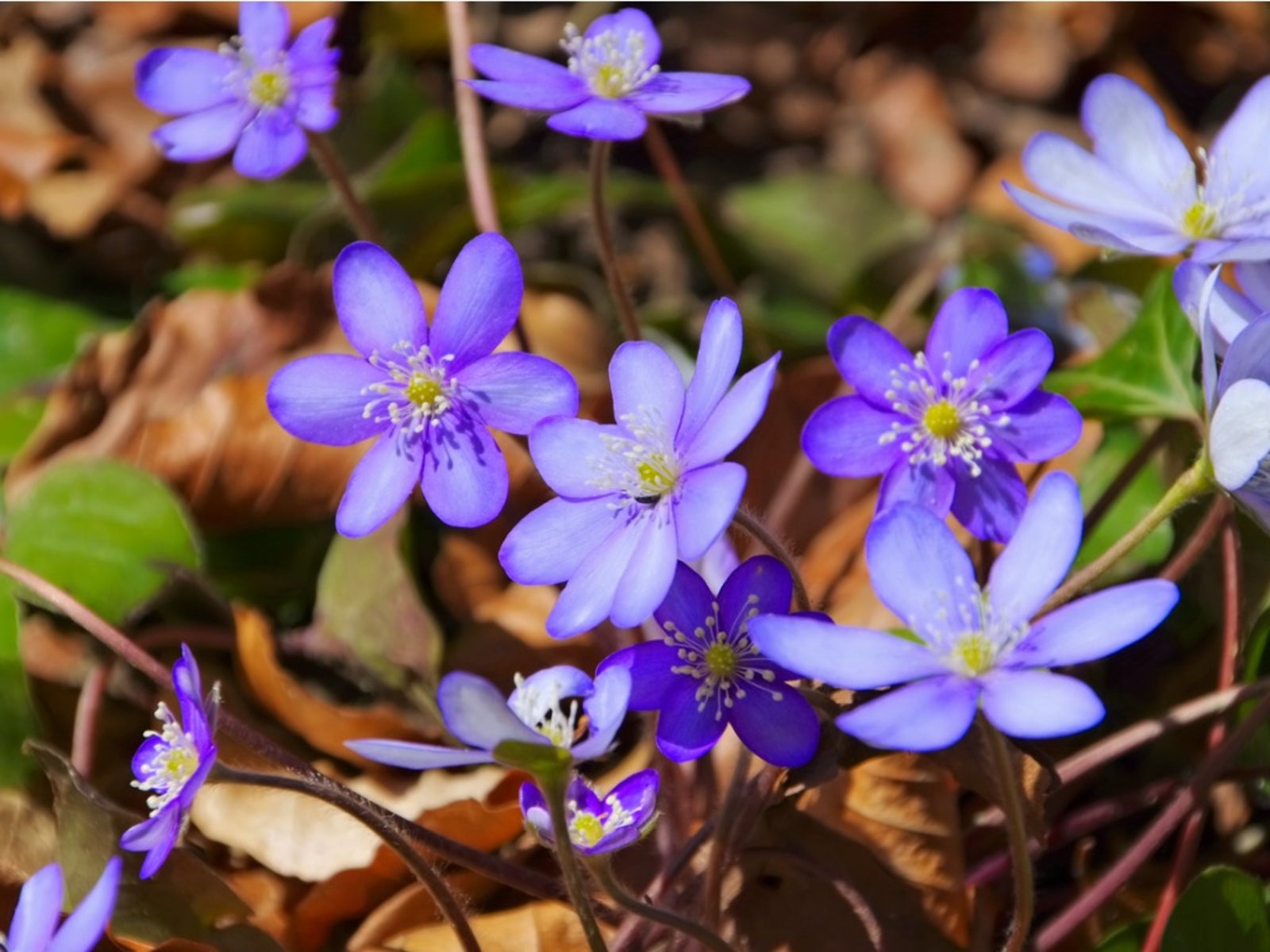Hepatica Wildflowers: Can You Grow Hepatica Flowers In The Garden

Hepatica (Hepatica nobilis) is one of the first flowers to appear in the spring while other wildflowers are still developing leaves. The blooms are various shades of pink, purple, white and blue with a yellow center. Hepatica wildflowers grow in moist conditions in deciduous forests and re-seed themselves to supply new plants each year. Can you grow hepatica flowers in the garden? Yes, you can. Keep reading for information on hepatica plant care.
About Hepatica Wildflowers
Hepatica is called liverleaf, liverwort and squirrel cups. The given name of liverleaf hepatica is apparent in the shape of leaves, which resemble a human liver. Native Americans in the Cherokee and Chippewa tribes used this plant to aid in liver disorders. This plant is still harvested for its medicinal values today. The leaves are three-lobed, dark green and are covered with silky, soft hairs. Leaves darken as they grow older and become a bronze color in the winter. The plants retain leaves throughout the dormant cycle to give them a head start for early spring blooming. Hepatica blooms occur from early spring until mid-spring for a showy spot of color in your garden. Single flowers bloom on top of upright, leafless stems from the plant and are about 6 inches (15 cm.) tall. The colorful flowers may not open on rainy days, but full blooms appear even on cloudy days with little sunlight. The flowers have a delicate scent that is light, but heady.
Hepatica Growing Conditions
Hepatica grows well in partial shade to full shade and is an excellent specimen plant under and around trees, or woodland settings. This plant thrives in well-drained soil, but also tolerates damp soil in low-lying areas. Few plants can tolerate heavy soils as liverleaf hepatica can. Hepatica seeds are available from both commercial and online nurseries in many varieties and colors. Planting seeds from a nursery is a more viable source than harvesting hepatica wildflowers from a forest. Plant seeds in the summer for blooms the following spring. Summer planting allows the plant to establish itself before the onset of winter and store nutrients for the following year's blooms.
Hepatica Plant Care
Once planted, additional hepatica plant care is rarely needed, especially if suitable hepatica growing conditions have been provided. You may divide the clumps of plants that multiply after the blooms have ceased to propagate them and add to another area in your garden. Mary Lougee is an avid gardener with over 20 years experience in both vegetable and flower gardening. She composts, uses natural and chemical pest control and grafts plants to create new varieties.
Gardening tips, videos, info and more delivered right to your inbox!
Sign up for the Gardening Know How newsletter today and receive a free copy of our e-book "How to Grow Delicious Tomatoes".
-
 Looking For Plants To Give You The Soft And Fuzzies? Try These 5 Fuzzy Leaf Plant Options
Looking For Plants To Give You The Soft And Fuzzies? Try These 5 Fuzzy Leaf Plant OptionsLovers of texture, drama, silver foliage and tactile plants will adore these special sensory garden additions. These fuzzy leaf plant options will leave you all aglow
By Susan Albert
-
 Get Ready For A Summer Of Hummers! Grow These Full Sun Hummingbird Plants and Flowers
Get Ready For A Summer Of Hummers! Grow These Full Sun Hummingbird Plants and FlowersIf you’re lucky enough to enjoy a sunny backyard, make sure you are maxing out on your pollinator opportunities and grow these full sun hummingbird plants and flowers
By Tonya Barnett